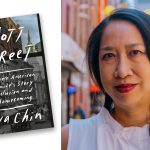Join us for “Harry Potter’s World: Renaissance Science, Magic, and Medicine” on Thursday, Feb. 23 in the Library (Building 1L), Room 216. this talk is in conjunction with the exhibit “Harry Potter’s World: Renaissance Science, Magic, and Medicine,” which is on display in the Library Rotunda Gallery through Tuesday, Feb.y 28.
The speakers will include:
Paola Ureni, Associate Professor of Italian, World Languages and Literatures, who will discuss “The Medieval Roots of Medical Thought,” and Chris Verene, Assistant Professor of Photography, Performing and Creative Arts, who will discuss “Resisting Fascism in J.K. Rowling’s, Harry Potter.”
The popular Harry Potter fiction series can be read and understood on several different levels. At the outside, the books are an engaging drama for children and teens that puts the main characters in a traditional battle of good versus evil. Beneath this reading of the work is a much more complex lesson from J.K. Rowling—the lesson of how totalitarianism rises through fear-mongering and shaping popular opinion, through the press, and through many forms of government corruption. The actions of the resistance in the magical community offer guidelines for activism against fascism in our real world.
The Exhibition
In 1997, British author J. K. Rowling introduced the world to Harry Potter and a literary phenomenon was born. Millions of readers have followed Harry to the Hogwarts School of Witchcraft and Wizardry where he discovers his heritage, encounters new plants and animals, and perfects his magical abilities. Although a fantasy story, the magic in the Harry Potter books is partially based on Renaissance traditions that played an important role in the development of Western science, including alchemy, astrology, and natural philosophy. Incorporating the work of several 15th- and 16th-Century thinkers, the seven-part series examines important ethical topics such as the desire for knowledge, the effects of prejudice, and the responsibility that comes with power. This exhibition, using materials from the National Library of Medicine, explores Harry Potter’s world and its roots in Renaissance magic, science, and medicine.













